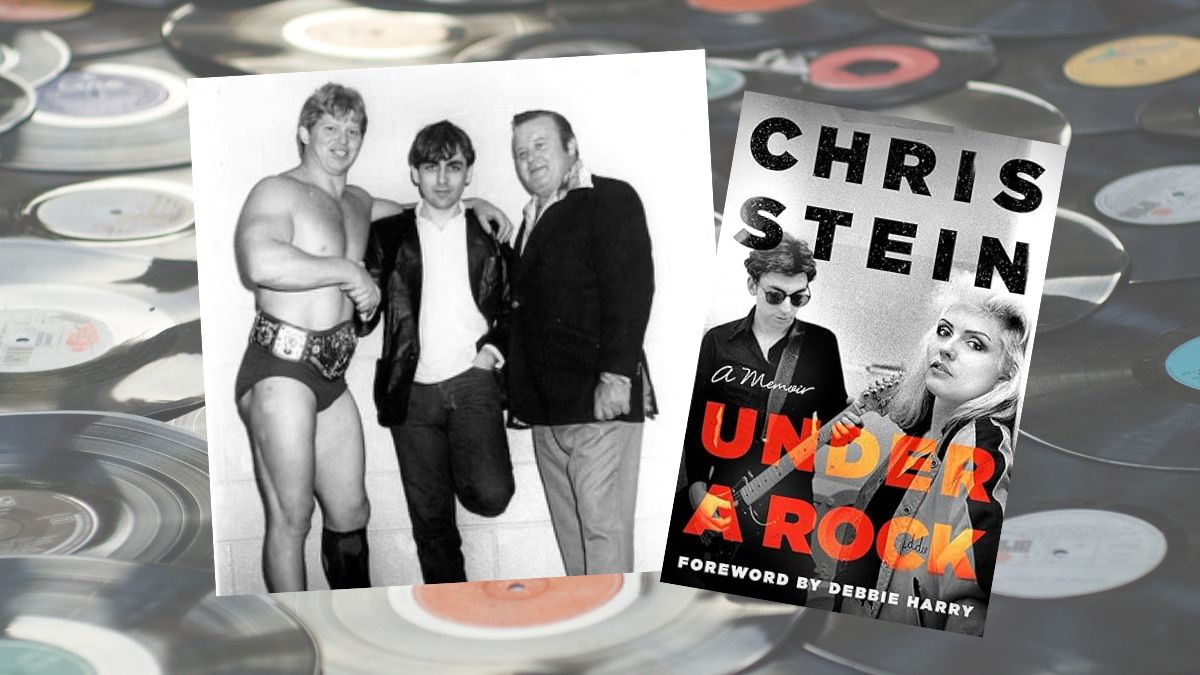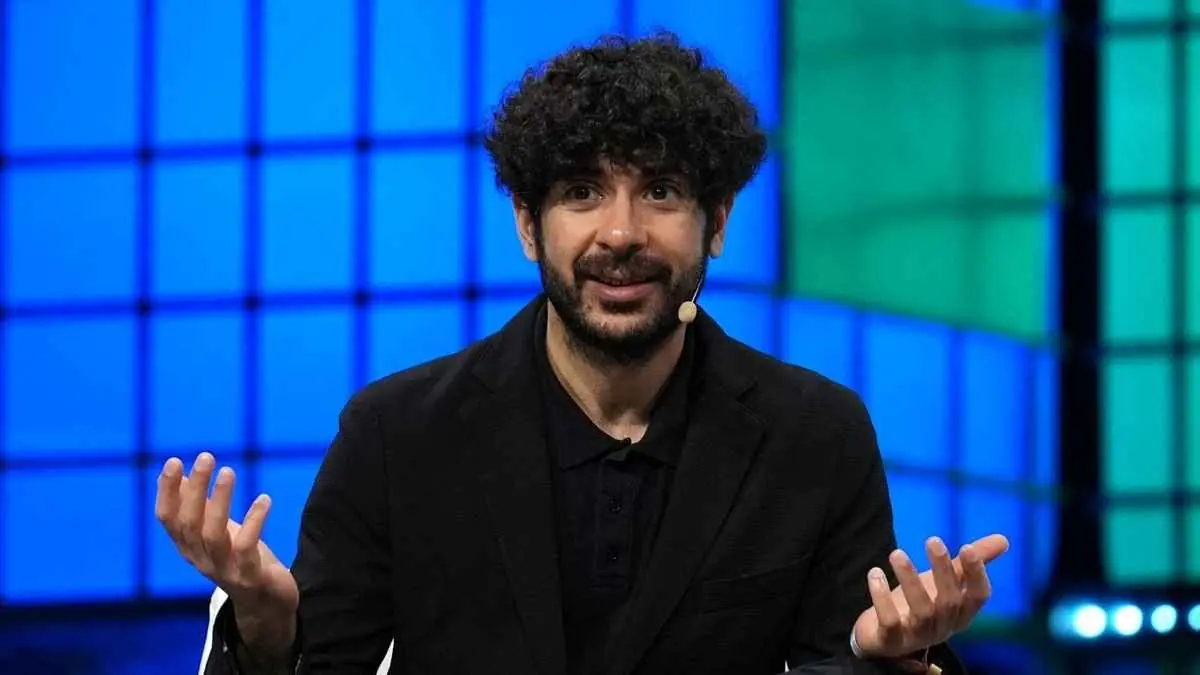On August 27, 1979, a very junior Vincent Kennedy McMahon pulled two special guests from Madison Square Garden’s ringside seats for a brief interview to fill time between matches. To his right, dressed in a gold one shoulder dress, was Blondie lead singer Deborah Harry. Next to her, dressed in a t-shirt, with his glasses hanging from its neck, was the band’s guitarist and Harry’s then-boyfriend, Chris Stein. The band had already released their critically lauded first three records, including their 1978 commercial breakthrough Parallel Lines, and landed their first chart-topping single with “Heart of Glass”. Stein and Harry were maybe the coolest couple in the coolest city in the world and their band was well on its way to becoming an international sensation.
“22,000 people is nothing for you people to draw,” McMahon says, referencing the evening’s sold-out Garden crowd. He was doing his best Dick Clark, but he came off as stiff, loud, and a little strange. “It’s unbelievable the amount of enthusiasm displayed by everyone in America, not only America, for what you’re doing.”
“Yeah, it’s really great,” Harry responds. “Just like wrestling.”
For several years starting in 1979, Stein and Harry were practically boosters for professional wrestling. They attended matches. They discussed their fandom on talk shows. Harry would even sometimes perform in a t-shirt emblazoned with a likeness of wrestler Dick Beyer, in his Dr. X persona.
“I got it from the back of a wrestling magazine,” Stein tells me. “The original was from Dr. X himself, presumably, or somebody connected to him.” Beyer, it turns out, had considered suing Harry, as he later told podcast host John Poz, “for using my gimmick, so to speak.” But, after seeing just how much attention her choice of clothing brought to him, he admitted to being grateful that he reconsidered. A replica of the shirt now can now be purchased online.
Stein, whose memoir Under A Rock, was released in July 2024, was a wrestling fan well before 1979.
“I was never a big sports guy, at all,” he says. “I never followed American football or baseball and I just liked wrestling since I was a kid. I remember Antonino Rocca and all the old guys. I was probably watching it back in the late ’60s, when I was little. I was always amused by it and it definitely had this grungy vibe that was missing in other sports.”
A longtime fan of comic books, B-movies, and mysticism, Stein appreciated, as well, wrestling’s outrageous, exaggerated sensibilities. “Wrestling fit into that whole aspect of stuff,” he says. “I always thought it was cool. It reminded me of a Godzilla movie.”
He followed not only WWWF, through its regular broadcasts in New York, but Georgia Championship Wrestling, as well, via cable. “That was great because that was even more raw and crazy.”
In Under A Rock, he includes a photograph taken backstage at Madison Square Garden by famed wrestling photographer George Napolitano. It features Stein with wrestler Greg Valentine and manager Ernie “The Grand Wizard” Roth.
“The one or two times we went backstage,” Stein says, “we would just go in the performer’s entrance. I don’t remember if we were invited but I remember meeting all those guys. I remember shaking hands with Andre [The Giant] and watching my hand disappear and I remember Valentine and [“Chief” Jay] Strongbow really seemed to be at odds and were glaring at each other backstage. They kept the kayfabe going.”
Vince McMahon Jr., still functioning largely as an announcer and assistant to his father, WWWF majority-owner Vincent J. McMahon, was always gracious and welcoming, Stein remembers. “He kept saying, ‘Let me put you in the ring,’ to Debbie, but we never took him up on it.”
Though the idea of including Harry in the show would almost certainly have been rejected by the senior McMahon, it’s a tantalizing what-if. This was two years before Andy Kaufman made his first trip to Memphis to wrestle Jerry Lawler, and roughly four years before Cyndi Lauper spearheaded the Rock ’n’ Wrestling era for McMahon Jr.’s rebranded WWF. That he was dreaming up ways to blend pro wrestling with pop culture as early as 1979, shows just how ambitious and forward-looking he was.
Asked if Harry may have accepted a formal offer to perform, Stein hesitates for a moment to answer. “Maybe,” he says. “I don’t know. It just didn’t occur to us. We were kind of raw by comparison to Cyndi, in spite of us having all those mainstream hits. It’s hard to say. Debbie might have gotten into doing a shoulder slam on somebody or an elbow drop.”
She would soon get the chance. In April of 1983, she starred alongside Andy Kaufman in the play Teaneck Tanzi: The Human Flytrap. The play was adapted for American audiences from the successful British play Trafford Tanzi. (Originally named Tuebrook Tanzi, the play’s name changed to reflect the different locales where it was staged.) Harry played a repressed housewife who works out her inner conflicts through wrestling. The evening featured her taking on, and defeating, among others, Kaufman as an evil referee, and her cruel and domineering husband, played by Scott Renderer. The show was savaged by critics and closed after a single day on Broadway. “Everybody blamed the director,” Stein writes in Under A Rock, “but I suspect it was ahead of its time, wrestling still being fringe in the early eighties.”
Wrestling, of course, didn’t stay on the fringes for much longer. Though it would change significantly from the weird, outsider form of entertainment Stein had grown up loving, he would keep up with it through the rest of the ’90s. “It lost some of the grittiness. They opted for the big cash-in and it’s kind of great that people love it so much and follow the storylines. There’s a great psychology that nobody questions it, but they all know it’s kind of made-up, in a way. It’s like watching a fictional TV show. People react to it, but at the same time it’s real because people are getting hurt and banged up. All these things combined put it in its own special sphere.”



